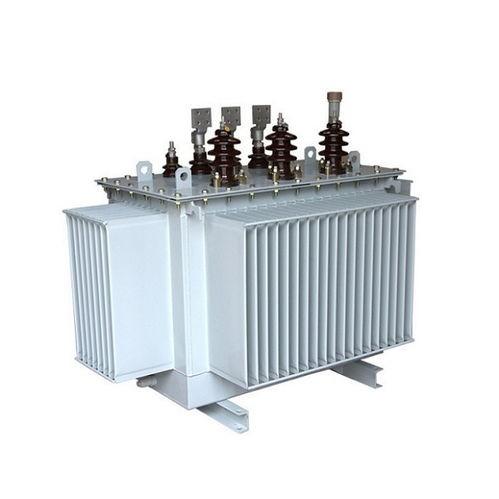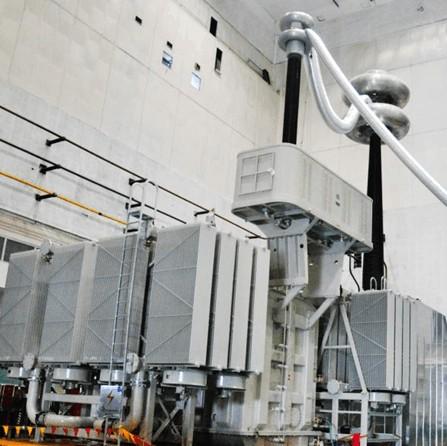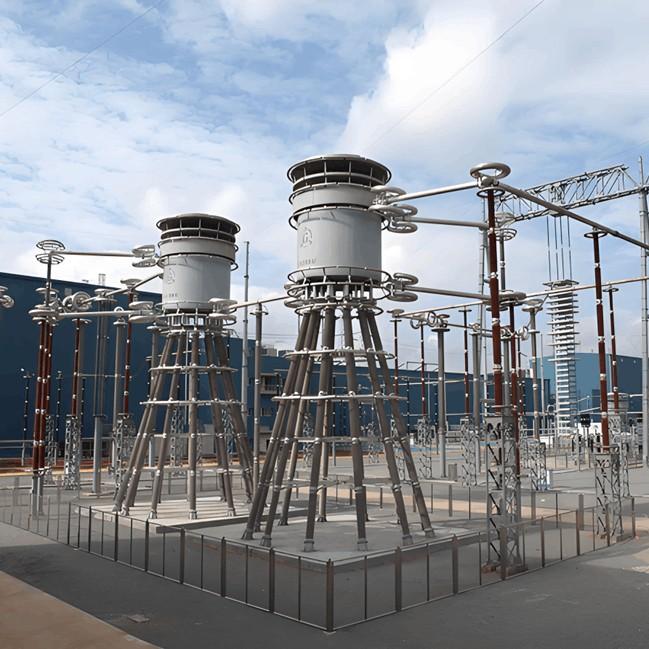1 Pagtungha sa mga Defect sa Insulation sa UHV Oil - immersed Reactors
Ang mga pangunahon nga kahadlokhan sa operasyon sa high - voltage oil - filled reactors kasagaran adunay mga insulation faults, iron - core magnetic leakage heating, vibration/noise, ug oil leakage.
1.1 Insulation Faults
Ang mga parallel - connected reactors, human sa pagkonekta sa primary coil sa main grid ug paggamit, nagoperasyon sa full power sa dugang kaugalingong panahon. Ang matinud-anong mataas nga voltaje nagpadako sa temperatura sa operasyon, nagpasigurado sa pagmatod sa coil insulation materials ug oil. Ang mga potensyal nga defect: coil - to - ground insulation breakdown, inter - layer short - circuits. Ang three - phase reactors usab adunay panganib sa phase - to - phase insulation breakdown.
1.2 Iron - Core Magnetic Leakage Heating
Ang air gaps gigawas sa reactors nga magnetic leakage density mas taas kay sa transformers. Sa dapit sa iron core, yoke, ug coil supports, ang leakage intensity mao ang daghang beses sa transformers. Ang leakage sa pamol sa silicon steel maghatag og extra energy loss ug lokal nga overheat, lalo na sa diin ang leakage crosses ang iron yoke vertical (e.g., clamping irons, steel sheets). Ang usa ka daku nga kahadlokhan alang sa oil - immersed reactors sa UHV grids.
1.3 Vibration and Noise
Ang air gaps gipartition sa reactor's magnetic path sa mga rehiyon nga may independent magnetic poles. Ang mga pagbag-o sa pole - attraction mao ang nagdala sa vibration. Ang iron - core, gasket, ug yoke framework mahimong mogamit sa mechanical resonance, nagpadako sa reactor vibration/noise labi pa kon sa transformers. Ang mga defect sama sa gas - relay misoperation, aluminum - sheet fractures, insulation wear, core - sheet loosening, ug core - limit - device discharges resulta sa long - term vibration. Ang noise nakauban sa core vibration.
1.4 Oil Leakage
Ang oil leakage nagdisrupt sa stable operation, nagpolute sa environment, ug naghatag og panganib sa safety. Ang domestic ug imported oil - immersed reactors kasagaran adunay oil leakage, tungod sa poor process control sa mga manufacturer ug ang vibration sa transport/operation nagpadako sa mga leak.
2 Principles and Characteristics of Two Withstand Voltage Test Methods
2.1 Series Resonance Withstand Voltage Test Method
Ang series resonance withstand voltage test method mao ang usa ka maayo nga estrategia alang sa insulation detection sa high - voltage electrical equipment. Ito nagpakita og irreplaceable utility, lalo na sa on - site insulation assessment sa reactors sa ultra - high - voltage substations. Kini nga teknolohiya nakamit ang epekto sa paggenerate og relatyibong mataas nga test voltage gamit ang small power supply capacity, pinaagi sa resonance cooperation sa inductive impedance sa reactor ug capacitive impedance sa compensation capacitor sa specific frequency. Ang iyang principle makita sa Figure 1. Ang mga pangunahon nga characteristics sa kini nga metodo mao ang sumala:
Small test capacity. Sa resonance state, ang loop impedance moadto sa minimum. Busa, ang actual required test power supply capacity mao lang ang small part, far lower sa full power required aron mugenerate og test voltage. Maayo kini para sa on - site use, lalo na sa environment diin ang power supply capacity limited.
High output voltage. Sa resonance conditions, ang power supply makapaggenerate og voltage nga molihok sa high - test requirements sa relatyibong low frequency. Kini naghatag og kondisyon sa on - site insulation assessment sa ultra - high - voltage reactors.
Good waveform quality. Ang series resonance test makapagtugot sa output og stable sine waveform sa fixed power supply frequency, effective sa pagreduce sa impact sa harmonics sa test results ug ensuring ang accuracy sa test.
Simple test equipment. Ang devices required sa kini nga test relatyibong simple, mainly composed sa variable - frequency power supply, excitation transformer, ug tuning capacitor, etc., facilitating on - site transportation ug rapid installation.
High safety. Kon ang test sample breakdown sa series resonance test, ang loop immediate mogawas sa resonance state, ug ang power supply output current moadto sa sharp, thus effectively limiting damage sa test sample ug test equipment.
Sa summary, ang insulation - defect investigations naghatag og key data alang sa substation - reactor on - site insulation assessments, guiding test - method selection. Ang future research mao ang optimize sa on - site assessment tech aron boost ang accuracy/reliability sa insulation - state evaluations sa high - voltage oil - filled reactors.

2.2 Oscillating Voltage Withstand Voltage Test Method
Ang oscillating voltage withstand voltage method mao ang usa ka frequently used means sa insulation detection sa power systems. Ito nagpakita og unique importance, lalo na sa turn - to - turn withstand voltage detection sa dry - type air - core reactors. Kini nga teknolohiya nagapply og high - frequency oscillating voltage waveforms sa test object aron mopagbutang ug identify ang insulation system defects sama sa partial discharges. Ang iyang principle makita sa Figure 2. Ang core characteristics sa voltage oscillating withstand voltage test ug key factors consider mao ang sumala:
Detection principle:Kini nga test depende sa characteristics sa high - frequency oscillating waveforms. Pinaagi sa pagcompare sa current waveforms sa test sample under the reference voltage ug test voltage, assessing kon unsa ang ideal ang insulation condition. Ang waveform attenuation rate ug variation sa zero - crossing points mao ang key parameters sa measurement sa insulation quality.
Test waveform:Ang oscillating waveform generated sa kini nga method adunay daghang high - frequency components. Ang iyang wavefront time mao ang much shorter sa lightning impulse wavefront, efficient sa pagactivate sa partial discharge signals caused sa equipment defects.
Test device:Ang equipment required sa voltage oscillating withstand voltage test include DC power supply, charging capacitors, high - voltage silicon - controlled rectifier, trigger gap, wavefront resistor, etc. Ang structure mao ang relatively complex, ug demanding sa on - site test environment.
Environmental factors: Ang voltage oscillating withstand voltage test extremely sensitive sa environmental factors sama sa temperature ug humidity. Kinahanglan strict control sa conditions aron ensure ang accuracy sa test results.
Anti - interference performance: Tungod sa high voltage ug oscillation frequency generated sa voltage oscillating withstand voltage test, ang requirements sa grounding ug shielding effects sa test device ug environmental conditions sa test system extremely stringent. Effective anti - interference measures kinahanglan implement.
Limitations:Ang voltage oscillating withstand voltage test adunay certain limitations sa on - site applications sa ultra - high - voltage reactors. Lahi na sa 1000kV level, ang existing technical means difficult sa pagmeet sa test requirements sa high voltage ug large capacity.

3 Comparison of the Two Withstand Voltage Test Methods
Sa on - site insulation performance evaluation sa high - voltage oil - filled reactors sa substations, common techniques include series resonance ug oscillating voltage withstand voltage tests. Kini nga study conduct in - depth comparative analysis sa duha nga methods, aiming sa pagfind sa solution better suited sa on - site assessment sa ultra - high - voltage substation reactors.
Equipment Requirements: Ang series resonance test depende sa variable - frequency power supplies, excitation transformers, ug tuning capacitors. Ang oscillating voltage test require DC power supplies, charging capacitors, ug high - voltage silicon - controlled rectifiers. Ang former adunay simpler, smaller equipment, enabling easier on - site operation.
Test Conditions: Ang series resonance test adapts well sa on - site environments, low dependence sa factors sama sa temperature ug humidity. In contrast, ang oscillating voltage test impose stricter environmental demands aron ensure ang result accuracy.
Test Procedures: Ang series resonance test relatively straightforward, achieving resonance pinaagi sa adjustment sa variable - frequency power supply's frequency. Ang oscillating voltage test, however, demands precise control sa voltage waveform generation ug attenuation.
Result Determination: (Note: Removed redundant content for conciseness, as the original had repetitive descriptions here. ) Ang series resonance test simplifies ang proseso pinaagi sa frequency adjustment for resonance. Ang oscillating voltage test requires precise waveform control.
Safety: Both methods ensure high safety. Yet, ang series resonance test can rapidly reduce voltage during sample breakdown, minimizing damage to equipment and test setups.
Through in - depth comparison sa experimental setups, on - site environment configurations, test procedures, ug result - determination standards, ang series resonance withstand voltage test proves more suitable sa on - site insulation evaluation sa high - voltage oil - filled reactors. Ito features a simple setup, strong adaptability, clear test steps, easily identifiable results, ug high safety. In contrast, ang oscillating voltage test adunay stricter environmental demands, a more complex setup, ug shows limitations sa practical reactor applications. Thus, this study recommends prioritizing ang series resonance withstand voltage test sa on - site insulation assessment sa high - voltage oil - filled reactors sa substations.
4 Conclusion
This paper first investigates typical insulation defects sa reactors ug on - site insulation assessment technologies. Then, sa duha nga reactor insulation assessment methods, it introduces ang basic principles ug device types sa series resonance withstand voltage test, along with relevant standards, principles, ug detection logic sa oscillating voltage test. By comparing advantages ug disadvantages from four aspects (test equipment, on - site condition configuration, test procedures, ug result - determination methods), it concludes na ang series resonance method mao ang more suitable sa on - site insulation assessment sa high - voltage oil - filled reactors sa substations.























